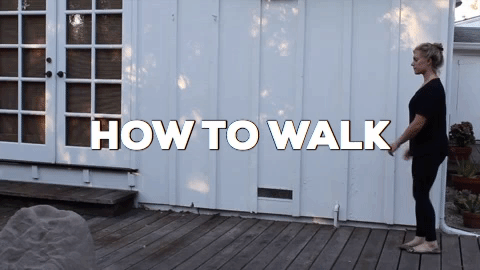
19 Sep How To Walk
**After posting this, I got a lot of Alexander Technique teacher’s thoughts on this post. So I want to be clear, that this is not ‘THE’ right way to walk, but ‘a’ great way to walk so as not to be in pain.
*The ‘puppet knees’ section especially pertains to those living with Parkinson’s Disease, or neuropathy in the legs.
Walking can be complicated and involved, so I think it would be easiest to analyze it in parts before putting it together as a whole. Usually in applying the Alexander Technique, I would begin by leading from the head (that part of the top of your skull that is a little higher than the rest of it). However, we are going to start at the opposite end–the feet because in the movement of walking, many people are doing some crazy things with their feet–and getting this part down, helps you coordinate the whole.
The Feet
• Padding the Ground. We want the feet to pad the ground. Much like a cat or dog or lion pads the ground. We used to do this as kids–but lost the coordination along the way.
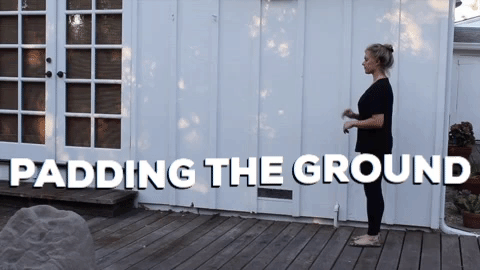
• No HEEL to TOE. The idea of striking first with your heel, and then your toe is an outdated version of walking/running that ended up creating a whole host of problems. From walking this way, people started to get things like bunions, plantar fasciitis, and heel spurs. What you want to do is land on the balls of your feet. Your heel will graze the ground, but the back part of your heel will not strike first. What is important is a feeling of padding the ground.
• Baby Steps. Most people take large steps. You do not want your feet out in front of you when you walk; you want them underneath your body. Please refer to the video above. Think Baby Steps.
• Pushing off your Big Toe. Push off your big toe to propel yourself forward. Take a look at how you land on your foot. Avoid landing on the outside of your foot, and instead propel yourself forward from your BIG TOE.
Knees
For people struggling with walking, especially those dealing with neurological disorders like Parkinson’s Disease, some special attention needs to be paid to the knees. Parkinson’s Disease will give you the PD ‘shuffle,’ and in order to combat this shuffling, many exercise programs have recommended that you should take big steps. Usually my students have interpretted this as large strides. You don’t want that. It makes it much more likely that you will have a fall.
• Puppet Knees. Take smaller strides, baby steps, but lift your knees like there are puppet strings pulling them up for you.
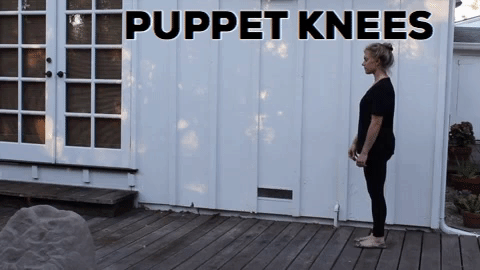
Where do my Hips go?
The next body part we will look at is what your hips are doing. You don’t want your hips tucked under you (like a cat who is sick or scared). You also don’t want your hips being pulled up your back, like a ducktail. So where should they go?
• Dinosaur Tail Hips Fellow Alexander Technique teacher, Robyn Avalon, uses a great visual with her students. One of a giant dinosaur tail growing out of your sacrum and trailing behind you. The very end of it flips up just a bit. When you imagine this tail trailing behind you, it is easy to visualize where your hips go. Try it out. Imagine a huge brontosaurus tail coming out of your sacrum and trailing behind you. To many people who have the habit of tucking their pelvis forward when they stand and walk, this will feel a little unfamiliar and like they are sticking their booty out.
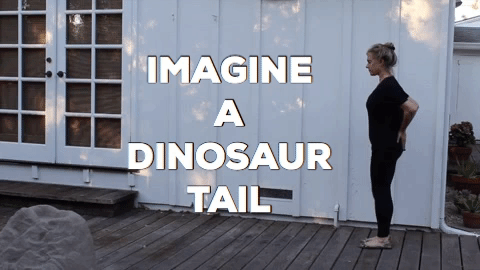
As always, the best way to know that you are walking and moving well is to go find yourself an Alexander Technique teacher near you.
Arms
• Let your arms and shoulders swing naturally with your gait. When you take a step with your RIGHT FOOT, your LEFT ARM should swing forward, and the opposite is true with the LEFT Foot and RIGHT ARM.
Head
• Head Leads, Body Follows. What coordinates the whole body is the head leading and the body following.
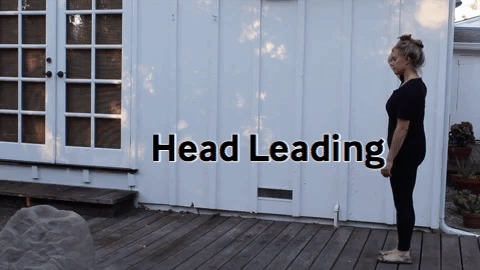
Coming up onto Toes. When you walk, you should come up onto your toes, but with your head leading–not your foot. Then you will feel that ‘rope’ I am talking about. Practice coming up onto your toes 3 Times and then hit the road! Start your walk!
Putting it All Together
Now that you have tried all the parts separately, lets coordinate them together. Ideally you practice these steps so much, that they happen fluidly together.
1. Head Leads the walk, body follows (come up to toes a few times before you start)
2. Let your dinosaur tail trail behind you
3. Allow your arms to swing
4. Push off your big toe to propel yourself forward
5. Pad the ground with your feet for a smoother gait
6. *If you have Parkinson’s Disease, allow your knees to come up higher, as though they were lifted by puppet strings.
(Pause)
1. Repeat steps (1-6)
Let me know how this goes for you…is there anything that is confusing? I would love to make it as clear as possible…
There are many styles of walking that are great. You could walk sexy like a lion, or more prancy like a horse. What is important, is that your joints are aligned one on top of another so that you are not in pain! Remember, it’s not about ‘getting it right’ but being easy in your body and learning how to align it so that you’ve got options!!
